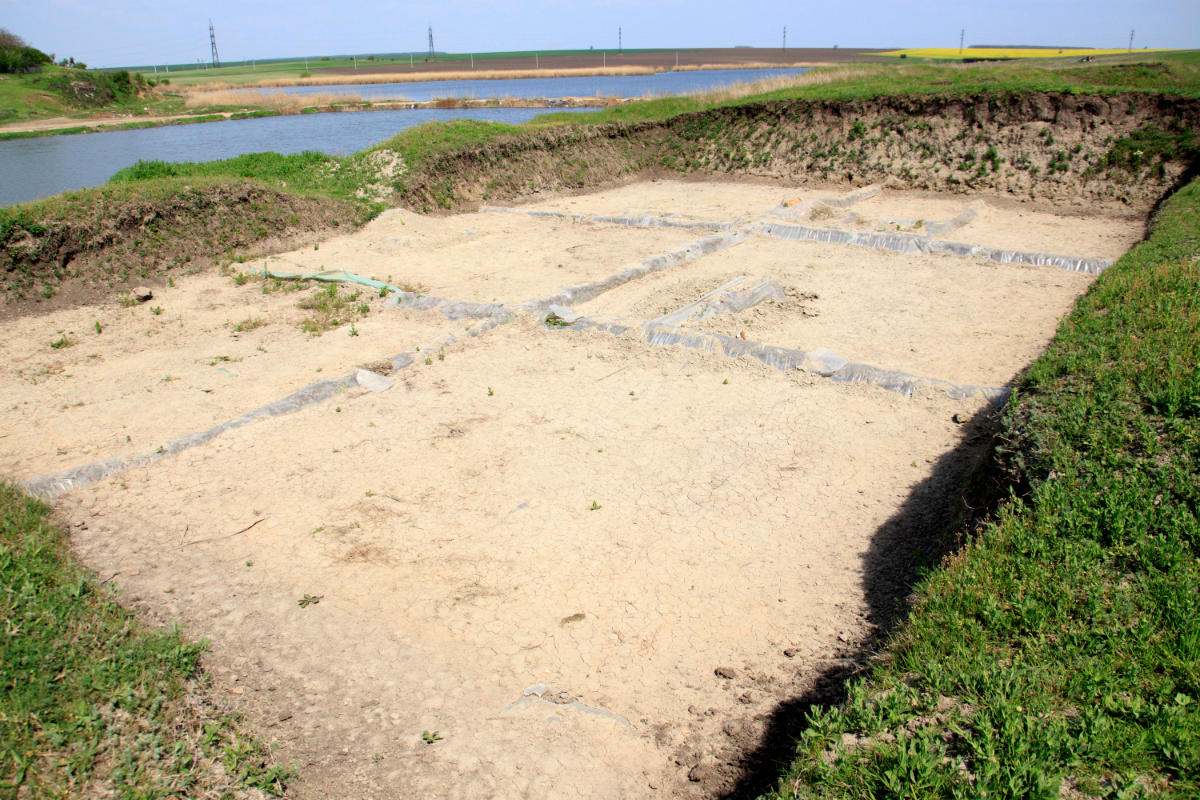Măriuţa archaeological site
Category OtherLOCATION
Mariuța
917014 Călăraşi
DESCRIPTION
The archaeological site of Mariuţa is one of the Romanian sites where the tourist is invited to discover the universe of the last half of the 5th millennium BC, a bridge to a remote civilization with a specific culture.
Ten houses build parallel to each other were discovered there, having a wide area in the middle, most probably intended for circulation. The walls of the houses were made of a system of buried rocks, between which there were woven rods and reeds. In addition to this, both the inside and the outside were covered by a clay bonding deposited in successive layers. The floors of these dwellings were made of clay deposited in layers, well chosen (usually yellow clay) and well trodden. The two-walled roof was made of reed deposited in thick layers and bonded with vegetal fibers on a network of horizontal and parallel beams. There were fire hearths discovered in all dwellings in Măriuţa. Some of the dwellings saw several repairs of their walls, visible in the added clay layers, which shows the special care given to the living space and the domestic activities.
The most important occupation of the small community in Măriuţa was animal husbandry. Osteological analyzes of mammalian remains revealed that the inhabitants of the village were raising cattle, with pigs and dogs also being encountered. A small workshop for making bone and horn tools was also discovered. In this workshop, besides the usual unused tools, there were once with traces of use (polished mainly on the active side) along with some hammers and pricks made of bone that have been brought to be repaired.
The clay or bone statuary reveals the existence of one or more feminine characters in various hypostases, which may represent synthetic forms of Gumelnian deities, linked to a possible cult of fertility.[1]
HISTORY
The site is located 5 km away from Oltenita on a terrace of the Danube. The Gumelniţa Civilization belongs in fact to an important cultural complex known as Gumelniţa-Kodjadermen-Karanovo VI, dated in the 5th millennium BC and representing the first great cultural unification between the South Balkans (Dikili Tash, Sitagroi) and the Carpathians. Inside of this large union one can identify local distinctions. These are often difficult to spot and explain but are undoubtedly related to the elements inherited from previous cultures, the necropolis of Varna (Bulgaria) being the most eloquent example.
The Gumelniţa-Kodjadermen-Karanovo VI cultural union was born from the local evolution of the Boian, Mariţa and Karanovo V cultures. This phenomenon happened quickly and it was immediately possible to speak of a unique culture with regional aspects. Cultural unification is even more evident in the A2 phase of the Gumelniţa culture, during which the ceramic and plastic forms are virtually identical throughout the area.
The main settlements are the ruins (Karanovo, Hârşova, Orduşani) whose stratigraphy provides a great deal of information on the chronological evolution of this culture and on the relations with the neighboring cultural groups (Vinča, Cucuteni, Dimini, Salcuţa). The Măriuţa archaeological site is of great importance for the knowledge of this culture, the impressive wealth of remains being discovered, allowing to highlight a strong social organization based on a rigorous hierarchy.
The evolution of Gumelniţa-Kodjadermen-Karanovo VI culminates progressively with the arrival of the tribes of Cernavoda culture on the Danube I considered by many researchers to be the first proto-Europeans.[2]
SITE SIGNIFICANCE
The archaeological site of Măriuţa is an Eneolithic settlement and necropolis of the Gumelniţa culture, mil. IV. It is of great importance for exploring the culture of the early inhabitants of these areas. It is also important for further research into the tribes of Gumelniţa and the overall history of Calarasi County.
VISITOR INFORMATION
It is located outside and is free to visit.
OTHER INFORMATION
The Gumelniţa Civilization belongs in fact to an important cultural complex known as Gumelniţa-Kodjadermen-Karanovo VI, dated in the 5th millennium BC.
CLASSIFICATION
Archaeological-historical site
[1] SITUL ARHEOLOGIC DE LA MĂRIUȚA
http://www.prinmuntenia.info/situl-arheologic-de-la-mariuta
[2] Cultura Gumelniţa
http://www2.culture.gouv.fr/culture/arcnat/harsova/ro/dobro3.htm




